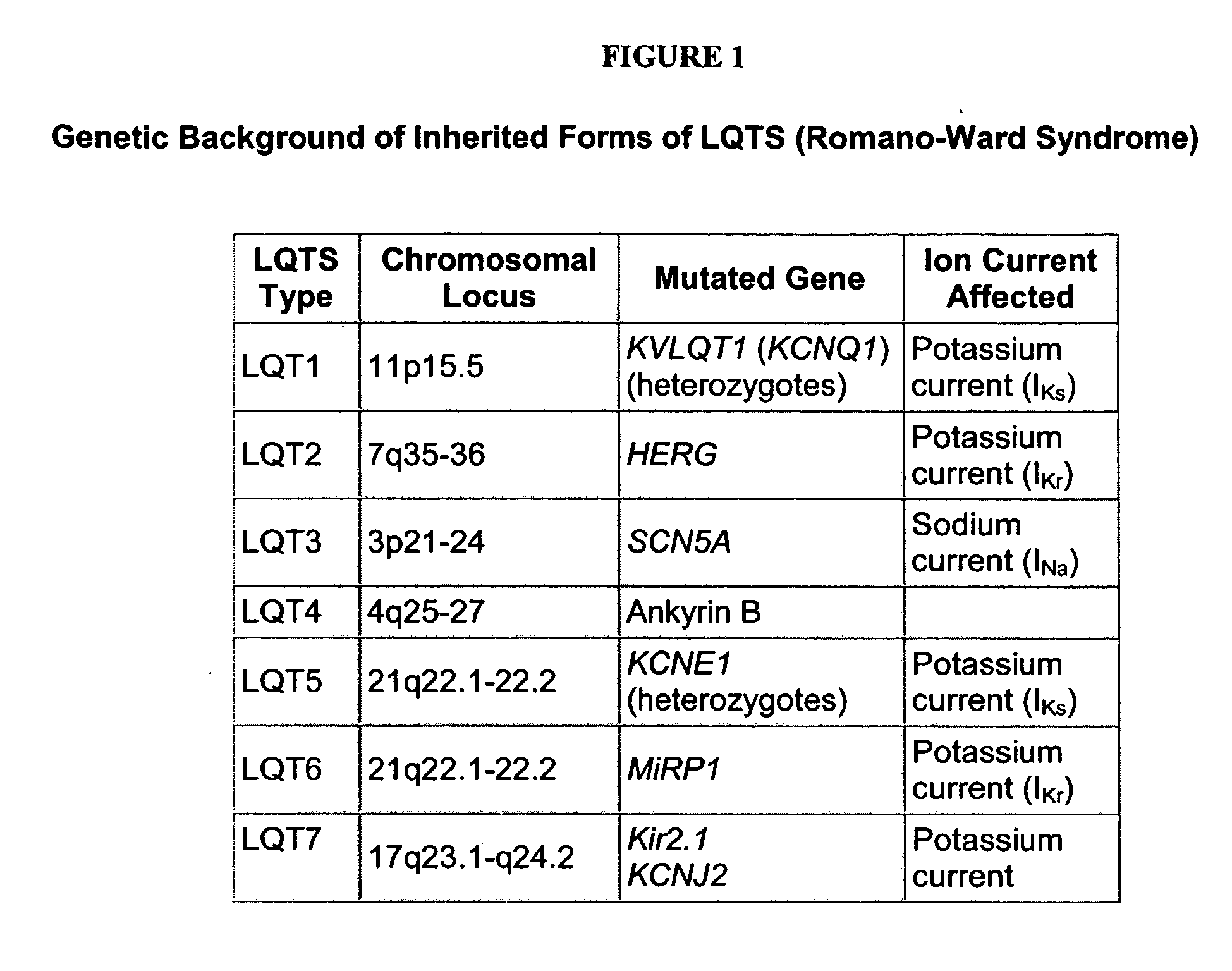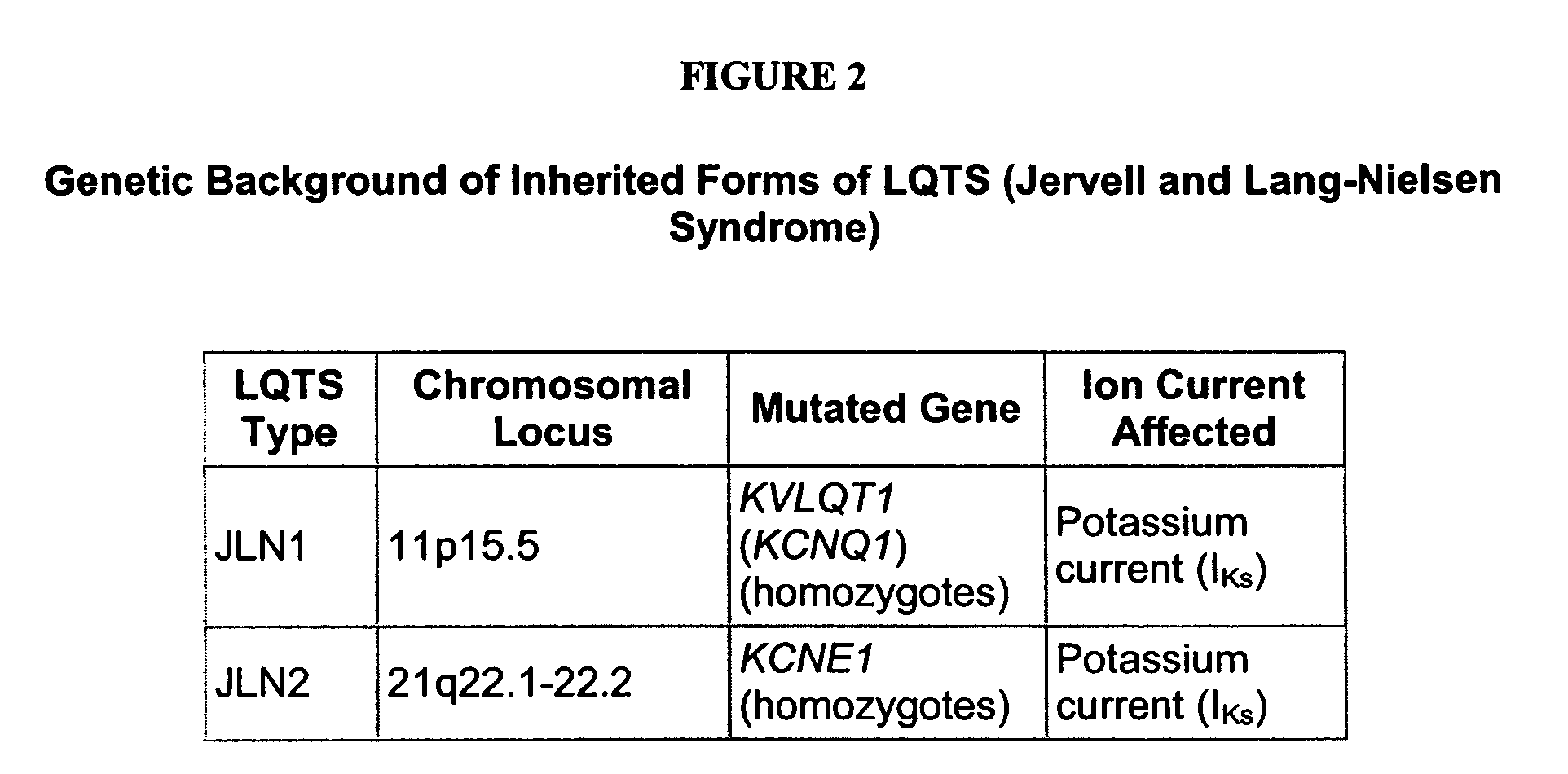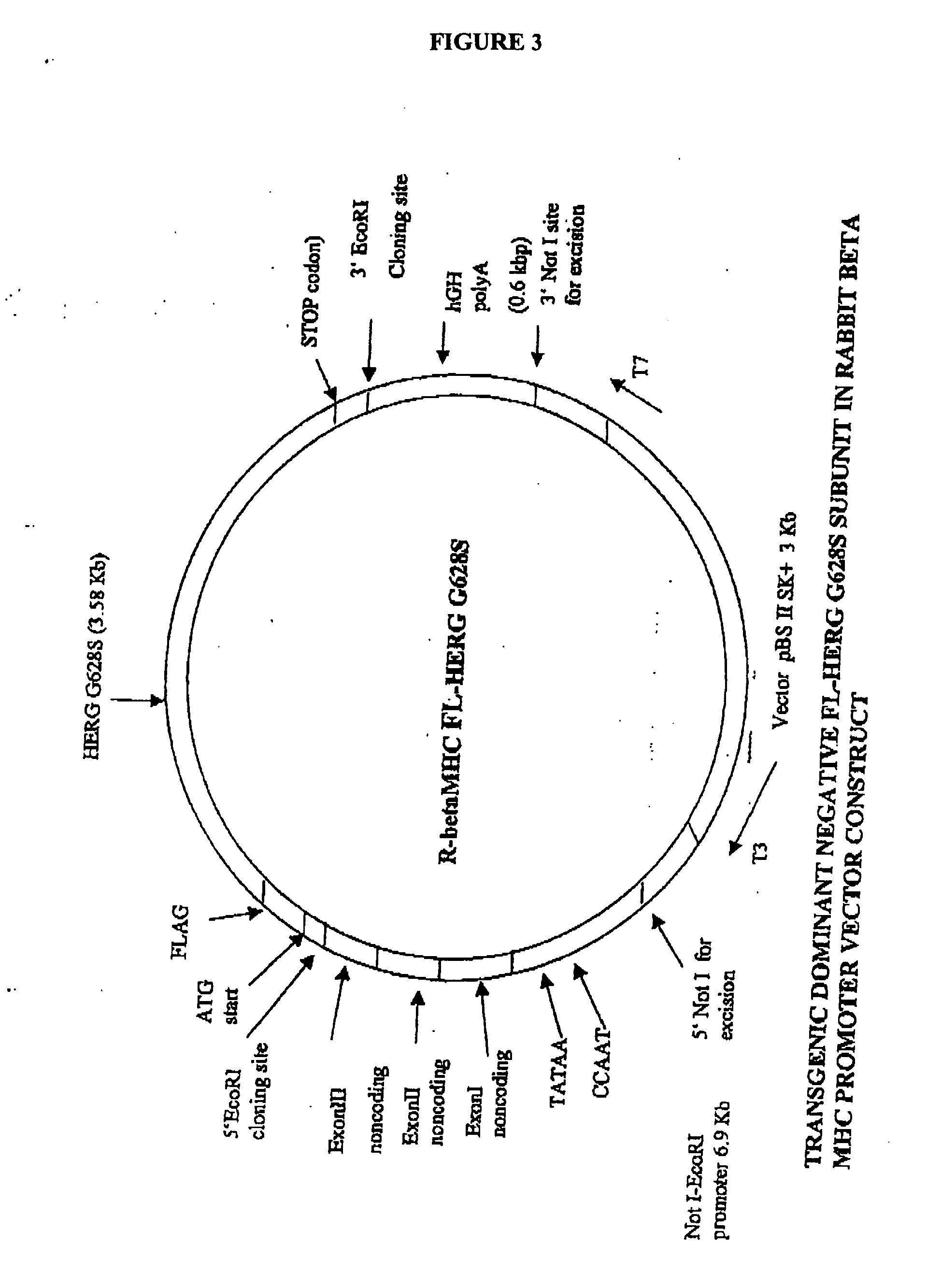Animal models of long QT syndrome and uses thereof
a technology of animal models and ion channel disorders, applied in the field of animal models of long qt syndrome, can solve the problems of not being able to accurately model human disease in rats, not being able to use these species to model cardiac ion channel disorders such as lqts, and not being able to fully understand the mechanisms behind the various types of lqts and associated disorders
- Summary
- Abstract
- Description
- Claims
- Application Information
AI Technical Summary
Benefits of technology
Problems solved by technology
Method used
Image
Examples
example 1
Transgenic Rabbit Models of LQT1 and LQT2
[0201] We selected the human KvLQT1-Y315S (for LQT1) and HERG-G628S (for LQT2) mutations. Since KvLQT1 and ERG play only a minor role in mouse physiology, we decided to create genetic models in a relatively large mammal in which the currents encoded by KvLQT1 and ERG genes play a major role in cardiac repolarization. Both mutations are located in the ‘pore’ region, which is a highly conserved signature sequence of the voltage-gated K+ channels across species. These mutations have been described in families afflicted with LQT1 and LQT2, respectively, within different ethnic group. However, the cellular phenotype of the cardiomyocytes and the electrical remodeling associated with long-term expression of these mutations in the heart were never described because of difficulties in obtaining human ventricular myocytes. Each of the mutations has been shown to generate completely non-functional channels, which exerted a strong dominant negative sup...
example 2
Analysis of the Surface ECG, Spontaneous and Inducible Arrhythmias
[0211] The ECG and arrhythmic phenotype of the two established transgenic lines may be characterized to confirm that the expression of a pore mutant of the human KvLQT1 or HERG as a transgene in rabbit heart has created a genetic model for LQT1 or LQT2 and that the phenotype is associated with spontaneous ventricular arrhythmias and sudden death.
[0212] The surface ECG of 10 transgenic KvLQT1-DN male and 10 transgenic KvLQT1-DN female rabbits, as well as an identical number of male and female ERG-DN rabbits, may be characterized. QT and QTc from surface ECGs may be assessed as compared with 10 age- and sex-matched littermate controls. The serial ECGs may be done at 8 weeks and at 3, 6, 9, and 12 months to assess the effect of the transgenes during development. The QT dispersion (QTd) as defined by the differences between the longest and shortest QT interval in the 12-lead ECG may be assessed and tested whether it is ...
example 3
Analyses of the Expression and Subcellular Distribution of Potassium Channels Expressed in Cardiomyocytes Derived from KvLQT1-DN and ERG-DN Rabbits
[0220] In order to better understand the pathogenesis of arrhythmias and sudden death in these models, the steady-state levels of potassium channel polypeptides in different layers (and regions) of the myocardium of the left ventricle may be studied. These experiments will test the hypothesis that K+ channel dysfunction in LQT1 and LQT2 results in compensatory changes in function and expression of other ion channels and that the manifestations of LQT1 and LQT2 depend on modulation by autonomic factors and function of other ion channels. Having a realistic model of LQT1 and LQT2 will enable us to elucidate the long-term remodelling effects of overexpression of dominant negative pore mutants of HERG and KvLQT1 in cardiomyocytes derived from different regions of the left ventricle. These findings can then be correlated with electrophysiolog...
PUM
| Property | Measurement | Unit |
|---|---|---|
| molecular weight | aaaaa | aaaaa |
| volume | aaaaa | aaaaa |
| area | aaaaa | aaaaa |
Abstract
Description
Claims
Application Information
 Login to View More
Login to View More - R&D
- Intellectual Property
- Life Sciences
- Materials
- Tech Scout
- Unparalleled Data Quality
- Higher Quality Content
- 60% Fewer Hallucinations
Browse by: Latest US Patents, China's latest patents, Technical Efficacy Thesaurus, Application Domain, Technology Topic, Popular Technical Reports.
© 2025 PatSnap. All rights reserved.Legal|Privacy policy|Modern Slavery Act Transparency Statement|Sitemap|About US| Contact US: help@patsnap.com



